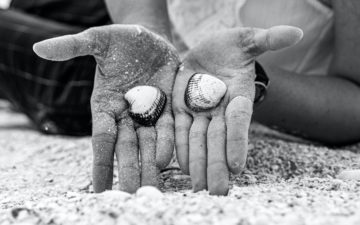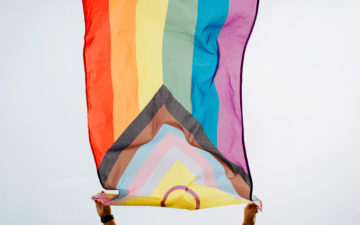The Americans with Disabilities Act (ADA) was passed on July 26, 1990 to prohibit discrimination against people with disabilities and mental health challenges. Title I of the ADA tackles discrimination in the workplace, and requires employers to make reasonable accommodations for employees with disabilities. Over one billion people across the globe are estimated to experience disability, and are faced with daily challenges such as:
- Accessibility to facilities and transportation;
- Difficulty utilizing technology, materials, resources, or policies to accommodate needs;
- Employer doubts’ and stigmatization;
- And more…
Across the field of marine conservation, challenges and opportunities for inclusivity and accessibility still exist. While physical impairments are periodically the topic of discussion, there are several other disabilities the sector can address and adapt to create a more inclusive environment.
The Disability Pride flag designed by Ann Magill, and shown in the header above, contains elements that symbolize a different part of the disability community:
- The Black Field: Represents individuals who have lost their lives, due not only to their illness, but also to negligence and eugenics.
- The Colors: Each color represents a different aspect of disability or impairment:
- Red: Physical disabilities
- Yellow: Cognitive and Intellectual disabilities
- White: Invisible and Undiagnosed disabilities
- Blue: Mental Health disabilities
- Green: Sensory perception disabilities
- The Zig Zagged Lines: Represent how people with disabilities move around barriers in creative ways.
Please note that the Zig Zagged Flag has been said to create challenges for those with vision impairments. The current version is designed to lessen the chances of flicker effects, nausea triggers, and improve visibility for color blindness.
The field of marine conservation has a duty to address challenges the disability community faces across our sector. TOF strives to be as compliant as possible to support staff and more, and will continue to do so for the years to come. Below is a non-exhaustive list of resources and examples highlighting how our organizations can bridge the gap:
A few examples of how to address disparities:
- Listening to, and hiring, disabled scientists: Including disabled people in these conversations, and having accessibility be determined by them, is the only way true accommodation will be put into place.
- “Accessible Oceans” created by oceanographer Amy Bowler, Leslie Smith, John Bellona.
- “Smith and others emphasized the need for an ocean and data-literate society. ‘If we only make everything accessible to people who learn visually, or to people who have their full vision capabilities, there is a big portion of the population that we are just cutting out, and that’s not fair,’ says Smith. ‘If we can figure out a way to break down that barrier, then I think it’s a win for everyone.’”
- Hosting events? Select facilities that are accessible and have technology in place to address visual and hearing impairments; additionally, provide transportation accommodations to all events or company gatherings. This should apply to your workplace environment as well.
- Provide additional job training and accommodations to support the employees growth and development as you would others outside of the disability community.
- Provide flexible working arrangements for individuals with invisible or undiagnosed disabilities. Provide significant sick leave to allow employees to not use personal or vacation time to recover or deal with challenges.
- Significantly reduce noise and visual distractions to support those with sensory perception disabilities.
- Here’s a good podcast file with relevant information.
Resources and guidance:
- Job Accommodation Network
- Society for Human Resources Management
- Invisible Disabilities Association
- U.S. Equal Employment Opportunity Commission
- Tools for Promoting Disability Access and Inclusion
- U.S. Office of Personnel Management
- Center for Disability Inclusion
- National Organization on Disability
- Employer Assistance and Resource Network (EARN)






